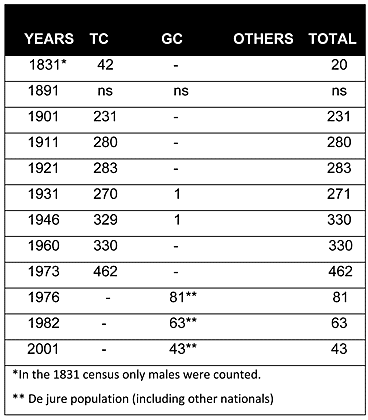
Platanisteia (Bladanisya for Turkish Cypriots) was a village of the south Troodos foothills, situated in the Limassol district, six kilometers north of Pissouri. The name derives from “platinos” (the plane tree). Until 1958, the Turkish Cypriot alternative name of the village was Bladanisya. However, in 1958, they adopted another alternative name, Çamlıca, literally meaning “place with pine trees” in Turkish.

As can be seen in the above chart, Platanisteia/Çamlıca had been a Turkish Cypriot village from the Ottoman period. Throughout the British period, the population of the village increased significantly, rising from 231 persons in 1901 to 330 in 1960.
Displacement:
No one was displaced from this village during the 1950s emergency years, nor during the inter-communal fighting of 1963-64. However, the village served as a reception center for displaced Turkish Cypriot families who fled the nearby villages in 1964. Richard Patrick recorded 14 displaced Turkish Cypriots still living in the village in 1971. The first conflict-related displacement from Platanisteia took place in late July 1974, when the village’s Turkish Cypriot population fled to the Akrotiri British Base Area. They stayed there until January 1975, when the entire village was transferred via Turkey to the northern part of the island and resettled mainly in Kontea/Türkmenköy(156) village of the Famagusta district. The total number of displaced Turkish Cypriots from Platanisteia can be estimated to be 350 (330 in the 1960 census).
Current Inhabitants:
Currently the village is mainly inhabited by a small number of displaced Greek Cypriots from the island’s north (mainly from the Karpasia peninsula). The last Cypriot census of 2001 put the total population at only 43.
Websites: